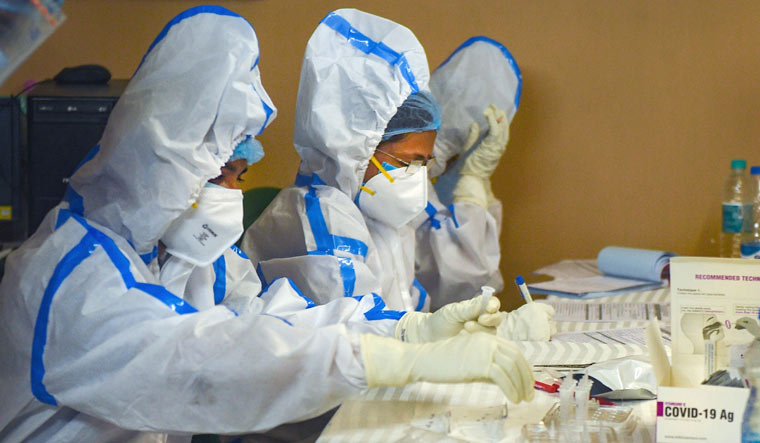Since the early phase of the COVID-19 epidemic, public health experts had been urging the government to manage one key detail—oxygen supply for managing patients. "Since the beginning, we have been saying, it's not Remdesivir or plasma that will save lives, but a cheap, albeit crucial intervention in the form of oxygen therapy would make all the difference," said a public health expert, who did not wish to be identified.
For a majority of patients, said the expert, fever will be followed by recovery. "In that, COVID is no different from a nasty bout of flu. Unlike the flu, though, in a smaller subset of patients, COVID shows a drop in oxygen levels, which is insidious and precipitous. This is why the term 'happy hypoxia', where people seem visibly fine one moment, but the very next moment, they may just collapse," the expert added.
Early monitoring of oxygen levels, administering it at the right time to prevent progression to severe disease, are part of the appropriate clinical management of COVID-19, say experts. Managing with oxygen therapy early on in the disease would only prevent the need for patients needing mechanical ventilation, and improve survival outcomes, they say.
Six months down the line, though, India seems to be struggling with getting oxygen to COVID-19 patients, leaving many gasping for breath, and laying bare the gap between an "abundant production" of the life-saving gas and its supply to the bedside of a COVID-19 patient. Several states such as Madhya Pradesh, Karnataka and Maharashtra have been reporting shortages, and consequently, deaths, too.
Health secretary Rajesh Bhushan told media that far from a shortage, the supplies of oxygen were abundant in the country. "As of today, the capacity of oxygen production is 6,900 metric tons. Of this, 2,800 metric tons is for medical use—for both COVID patients (around six per cent) and non-COVID patients. Another 2,200 metric tons is for industrial requirement, and 1,900 metric tons is the surplus, as of today. Shortages arise because at the facility level, the inventory management is not done properly. We have held several meetings on the issue with states and asked them to ensure that they get it from manufacturers and steel plants. Possible stock out alerts should be in place so as to replenish the supplies. Control rooms have been established and rational use should be stressed upon," Bhushan said.
Rajiv Nath, forum co-ordinator, association of Indian medical device industry, said that the government had approached the industry, including oxygen manufacturers in March where the manufacturers had claimed that they had enough production capacity—twice of what was the projected need at the time. "Even we are surprised since the manufacturers had assured the government of adequate supplies. Prices are being raised artificially by some manufacturers, who are obviously taking advantage of the situation," said Nath. Officials from the department of pharmaceuticals were confident of having enough oxygen supplies, even if cases went up from "a lakh to 3 lakhs", and import of oxygen could also be considered, an industry source said.
"Transportation and logistics could also be issues that were causing the shortages," Nath said. Smaller healthcare establishments were particularly at risk of facing these stock-outs,” he added.



